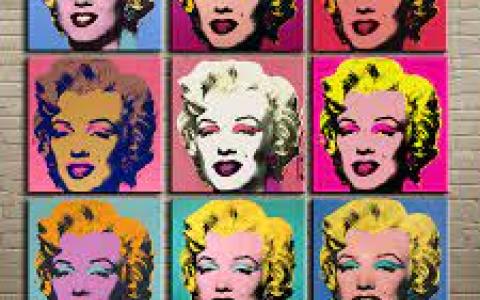
Welcome to the end of derivative art, which is bad news for people who've invested millions collecting the work of people like Andy Warhol.
The ruling March 26 by 2nd U.S. Circuit Court of Appeals started the process of striking fear in the heart of artists and collectors. The case is complex and the court’s thinking is tough for a layperson to follow.
But in a nutshell, the court ruled that Warhol’s “use of a copyrighted photograph of musician Prince in a series of prints was not ‘transformative’ and did not constitute fair use,” according to the National Law Review, because Warhol’s work “retain[ed] the essential elements” of a photograph by celebrity photographer Lynn Goldsmith without adding to or modifying those elements.
While the collectors themselves probably don't inherit legal liability for the artists' creative swipes, it still isn't great news for the intrinsic value of the art they've bought.
After all, the right to license reproductions often passes with ownership of the physical object. If you're a collector, you get to decide who makes the posters and other merchandise bearing the image of your art.
Warhol became famous by altering celebrity photos and advertising material just enough to create something new and unique. Then he monetized that work by selling limited edition reproductions.
The Prince photo apparently didn't go far enough. His estate would theoretically need to split any licensing fees with the original photographer now . . . or if a collector owned the rights, the split would go that way.
Just a few days prior to that ruling, a non-fungible token -- unique files that live on a blockchain and can verify ownership of a piece of digital art -- from an artist known as Beeple, sold for a staggering $69 million.
Christie’s auction house described the work connected to the NFT --“Everydays - The First 5000 Days" -- as a “monumental collage” of images that often contain renderings of celebrities
These two events have left many art collectors wondering about the value of work previously viewed as “transformative” while also trying to gauge if and how to collect NFTs.
For insight, we turned to Clyde F. Smith, founder of CryptoArtNet and the author of the NFT Entrepreneur newsletter.
“I actually agree with the court's ruling that the images and prints Andy Warhol created based on the Lynn Goldsmith photograph were not transformative in any meaningful sense of the word,” Smith told The Wealth Advisor. “They are the equivalent of creating an Andy Warhol Instagram filter and applying it to a photograph that was not licensed for such use.”
And while noting that he is “not a legal scholar,” Smith says Beeple’s work looks transformative in a way that Warhol’s prints do not. “Whatever one thinks of (Beeple’s) his work, it appears to be original work based on his own ideas, unlike the Warhol which takes someone else's work and applies a visual style that leaves the original image quite recognizable.”
Smith says investors are right to be worried about what the court ruling means for work by Warhol and similar artists, but can be confident that the top tiers of the NFT art world contain truly transformative work of value.
“The "blue chip" artists clearly do original work. I don't know of any examples of high end NFT art that is focused on appropriating images except for work involving machine intelligence and such work is clearly transformative,” Smith said.
“I would be much more concerned about the implications for collectors holding work by a Richard Prince than for those holding Beeple works."
.



